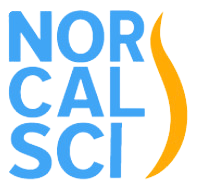ADA conference brings together multiple agencies to help create "equal opportunity"
The Pacific ADA Center held its 2018 ADA Update Conference at the Oakland Convention Center Sept. 24-25 and our good friend, Lynn Murray from the Placerville Mobility Support Group, attended the conference and was kind enough to file this report.
Some 150 people attended the Conference coming from as far away as Hawaii and Washington, DC, including staffers from the Department of Justice (DOJ), Equal Employment Opportunity Commission (EEOC), Federal Emergency Management Agency (FEMA), U.S. Access Board and Dept. of Homeland Security (DHS). Attendees also included ADA Coordinators, civil engineers, architects, building inspectors and emergency responders.
In one of the most iconic moments for the disability community, President George Bush signs into law the Americans with Disabilities Act of 1990 on the South Lawn of the White House.
The keynote speakers – Arlene Mayerson of Disability Rights Education and Defense Fund and John Wodatch (retired) of DOJ – jointly delivered an in-depth history of the ADA that set the Conference tone, emphasizing Civil Rights law. Pacific ADA Program Manager Jan Gerrett concurred, “Knowledge about disability civil rights is essential for people who live with disabilities every day.” The ADA’s theme of equal opportunity – not special treatment – was a major take-away from the two-day event.
Attendees selected seven information-packed “classes” from the 21 offerings. Some course titles included: Reasonable Accommodations and Undue Hardship, A Frontier View of Disasters from the Disability Organization and Emergency Services Perspective, Most Commonly Misunderstood Sections of the ADA Standards, Service Animals, Building Egress.
A common thread throughout the more technical sessions was the need for designers to exceed ADA standards and guidelines so that building inspectors would not have to red tag completed work. For example, if the allowable sidewalk cross slope is 2%, place 1.88% on the contractor’s drawing. Another theme that resurfaced frequently was the need for project designers to anticipate technological advances. One example is the disappearing public telephone and its accompanying ADA Standards. Advancing cell technology changes the real world before the ADA Standards are revised.
For additional information about the Conference or for answers to ADA-related questions, go to the Pacific ADA Center’s official website, https://www.adapacific.org/

